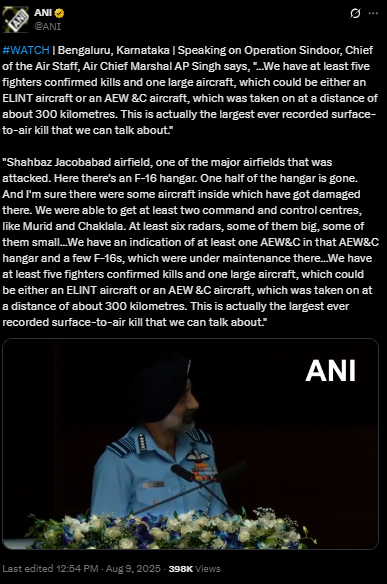Advanced Cyberattack Uses SU-30 Procurement ZIP File to Target Indian Air Force
Introduction
The unprecedented cyber espionage attempt on the Indian Air Force has shocked the military fraternity in the age of the internet where innovation is vital to national security. The attackers have shown a high degree of expertise in their techniques, using a variant of the infamous Go Stealer and current military acquisition pronouncements as a cover to obtain sensitive information belonging to the Indian Air Force. In this recent cyber espionage revelation, the Indian Air Force faces a sophisticated attack leveraging the infamous Go Stealer malware. The timing, coinciding with the Su-30 MKI fighter jets' procurement announcement, raises serious questions about possible national security espionage actions.
A sophisticated attack using the Go Stealer malware exploits defense procurement details, notably the approval of 12 Su-30 MKI fighter jets. Attackers employ a cunningly named ZIP file, "SU-30_Aircraft_Procurement," distributed through an anonymous platform, Oshi, taking advantage of heightened tension surrounding defense procurement.
Advanced Go Stealer Variant:
The malware, coded in Go language, introduces enhancements, including expanded browser targeting and a unique data exfiltration method using Slack, showcasing a higher level of sophistication.
Strategic Targeting of Indian Air Force Professionals:
The attack strategically focuses on extracting login credentials and cookies from specific browsers, revealing the threat actor's intent to gather precise and sensitive information.
Timing Raises Espionage Concerns:
The cyber attack coincides with the Indian Government's Su-30 MKI fighter jets procurement announcement, raising suspicions of targeted attacks or espionage activities.
The Deceitful ZIP ArchiveSU-30 Aircraft Acquisition
The cyberattack materialised as a sequence of painstakingly planned actions. Using the cleverly disguised ZIP file "SU-30_Aircraft_Procurement," the perpetrators took benefit of the authorisation of 12 Su-30 MKI fighter jets by the Indian Defense Ministry in September 2023. Distributed via the anonymous file storage network Oshi, the fraudulent file most certainly made its way around via spam emails or other forms of correspondence.
The Spread of Infection and Go Stealer Payload:
The infiltration procedure progressed through a ZIP file to an ISO file, then to a.lnk file, which finally resulted in the Go Stealer payload being released. This Go Stealer version, written in the programming language Go, adds sophisticated capabilities, such as a wider range of browsing focussed on and a cutting-edge technique for collecting information using the popular chat app Slack.
Superior Characteristics of the Go Stealer Version
Different from its GitHub equivalent, this Go Stealer version exhibits a higher degree of complexity. It creates a log file in the machine owned by the victim when it is executed and makes use of GoLang utilities like GoReSym for in-depth investigation. The malware focuses on cookies and usernames and passwords from web browsers, with a particular emphasis on Edge, Brave, and Google Chrome.
This kind is unique in that it is more sophisticated. Its deployment's cyber enemies have honed its strengths, increasing its potency and detection resistance. Using GoLang tools like GoReSym for comprehensive evaluation demonstrates the threat actors' careful planning and calculated technique.
Go Stealer: Evolution of Threat
The Go Stealer first appeared as a free software project on GitHub and quickly became well-known for its capacity to stealthily obtain private data from consumers who aren't paying attention. Its effectiveness and stealthy design rapidly attracted the attention of cyber attackers looking for a sophisticated tool for clandestine data exfiltration. It was written in the Go programming language.
Several cutting-edge characteristics distinguish the Go Stealer from other conventional data thieves. From the beginning, it showed a strong emphasis on browser focusing on, seeking to obtain passwords and login information from particular websites including Edge, Brave, and Google Chrome.The malware's initial iteration was nurtured on the GitHub database, which has the Go Stealer initial edition. Threat actors have improved and altered the code to serve their evil goals, even if the basic structure is freely accessible.
The Go Stealer version that has been discovered as the cause of the current internet spying by the Indian Air Force is not limited to its GitHub roots. It adds features that make it more dangerous, like a wider range of browsers that may be targeted and a brand-new way to exfiltrate data via Slack, a popular messaging app.
Secret Communications and Information Expulsion
This variation is distinguished by its deliberate usage of the Slack API for secret chats. Slack was chosen because it is widely used in company networks and allows harmful activity to blend in with normal business traffic. The purpose of the function "main_Vulpx" is specifically to upload compromised information to the attacker's Slack route, allowing for covert data theft and communication.
The Time and Strategic Objective
There are worries about targeted assaults or espionage activities due to the precise moment of the cyberattack, which coincides with the Indian government's declaration of its acquisition of Su-30 MKI fighter fighters. The deliberate emphasis on gathering cookies and login passwords from web browsers highlights the threat actor's goal of obtaining accurate and private data from Indian Air Force personnel.
Using Caution: Preventing Possible Cyber Espionage
- Alertness Against Misleading Techniques: Current events highlight the necessity of being on the lookout for files that appear harmless but actually have dangerous intent. The Su-30 Acquisition ZIP file is a stark illustration of how these kinds of data might be included in larger-scale cyberespionage campaigns.
- Potentially Wider Impact: Cybercriminals frequently plan coordinated operations to target not just individuals but potentially many users and government officials. Compromised files increase the likelihood of a serious cyber-attack by opening the door for larger attack vectors.
- Important Position in National Security: Recognize the crucial role people play in the backdrop of national security in the age of digitalisation. Organised assaults carry the risk of jeopardising vital systems and compromising private data.
- Establish Strict Download Guidelines: Implement a strict rule requiring file downloads to only come from reputable and confirmed providers. Be sceptical, particularly when you come across unusual files, and make sure the sender is legitimate before downloading any attachments.
- Literacy among Government Employees: Acknowledge that government employees are prime targets as they have possession of private data. Enable people by providing them with extensive cybersecurity training and awareness that will increase their cognition and fortitude.
Conclusion
Indian Air Force cyber surveillance attack highlights how sophisticated online dangers have become in the digital era. Threat actors' deliberate and focused approach is demonstrated by the deceptive usage of a ZIP archive that is camouflaged and paired with a sophisticated instance of the Go Stealer virus. An additional level of complication is introduced by integrating Slack for covert communication. Increased awareness, strict installation guidelines, and thorough cybersecurity education for government employees are necessary to reduce these threats. In the digital age, protecting national security necessitates ongoing adaptation as well as safeguards toward ever-more potent and cunning cyber threats.
References
- https://www.overtoperator.com/p/indianairforcemalwaretargetpotential
- https://cyberunfolded.in/blog/indian-air-force-targeted-in-sophisticated-cyber-attack-with-su-30-procurement-zip-file#go-stealer-a-closer-look-at-its-malicious-history
- https://thecyberexpress.com/cyberattack-on-the-indian-air-force/https://therecord.media/indian-air-force-infostealing-malware













